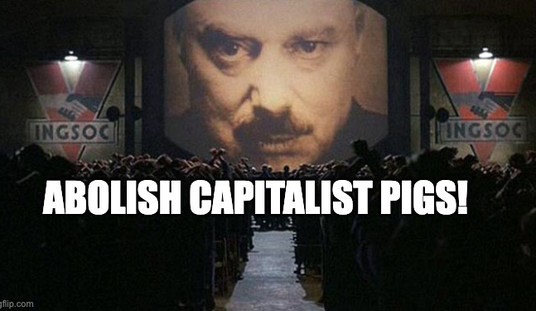Yesterday, three members of the House asked the head of the National Highway and Transportation Safety Administration why reports of fires in batteries that power the Chevy Volt appear to have been delayed by “several months.” The fires, which have just recently come to light, have caused GM to offer buybacks to unhappy customers and call into question the safety of the green-car technology pushed by the administration, and the trio wants to know whether the NHTSA was pressured to keep quiet about the problem:
Three House Republicans, describing themselves as “deeply troubled,” asked the Obama administration Thursday to explain why it didn’t disclose a fire in a crash-tested extended-range electric Chevrolet Volt for several months — and whether the White House asked a safety agency to delay the release.
“We are deeply troubled by the fact that the National Highway Traffic Safety Administration has deliberately suppressed public knowledge of the safety risk posed by the Chevrolet Volt,” said the letter from Reps. Darrell Issa, R-Calif., chairman of the House Oversight and Government Reform Committee, Jim Jordan, R-Ohio, and Mike Kelly, R-Pa.
It was sent to NHTSA Administrator David Strickland.
U.S. Transportation Secretary Ray LaHood denied any suggestion that his agency deliberately kept the information under wraps for months.
The first incident of a battery fire in tests came in June, three weeks after a crash test — and sparked three nearby fires as well. A second test in November produced another fire, at which point the results were made public. The letter asks whether the White House intervened to keep the NHTSA quiet to protect further sales of the Volt, which the Obama administration has hailed as the new generation of technological efforts that will produce energy independence in the US.
LaHood has already responded publicly that the NHTSA took an appropriately deliberative approach, since they didn’t know whether the first fire had anything to do with the Volt itself. When they replicated the outcome in a second test, the NHTSA did publish the issue; as LaHood says, we know about it because the NHTSA reported it. While the line of inquiry about White House intervention is not inappropriate, considering the five-month delay in testing for the cause of the fire, it’s also good to keep in mind that a single outcome in testing shouldn’t trigger recalls or warnings. Only when that outcome can be duplicated should the NHTSA prompt action by a manufacturer.
However, a one-off fire is hardly the big issue with the Obama administration’s push on electric cars. Yesterday, the Washington Post reported that the billions this administration has sunk into this area of green technology will end up producing bupkis:
A123 Systems, a battery maker that received $380 million in government support, announced recently that declining orders had forced layoffs. Instead of up to 3,000 new Michigan jobs as Obama and the company had predicted, it now has 690 employees.
Battery maker EnerDel, recipient of a a $118 million federal grant, took a hit when its key customer, electric-car maker Think, declared bankruptcy this year. Johnson Controls, which received a $299 million stimulus grant, opted to build one factory instead of two because of lower-than-projected demand, a company official said, and that one is now operating at half capacity.
California electric-car maker Aptera announced it was shutting its doors because of problems raising capital. And General Motors — whose moderately priced Volt was supposed to drive Obama’s push for 1 million alternative vehicles by 2015 — revealed last week that it would fall roughly 38 percent shy of its goal of selling 10,000 Volts this year. …
Nissan, Tesla Motors and Fisker Automotive received $2.4 billion in loans to support building U.S. manufacturing plants for electric vehicles through an Energy Department program. In a stimulus push in August 2009, Obama announced $2.4 billion in more than 40 grants to car industry firms, much of it to advanced-battery manufacturers.
Fisker is finally producing a few cars now … in Finland. Their car model is called the Karma, which is a brilliant and unintended piece of irony. The billions that Obama poured into this industry was supposed to produce a million domestically-made electric vehicles by 2015. Sales this year? Just under 17,000, the vast majority Chevy Volts and Nissan Leafs, both of which were in production before Obama took office — and neither of which shows any indication of catching fire — at least in the figurative sales sense.
Part of the reason is the high cost. Even with government subsidies in place for purchasing the vehicles, they are very expensive for subcompact vehicles at more than $32,000 (close to $40,000 without the tax credits). Consumers could literally buy two traditional subcompacts for the price of one Volt or Leaf. Even worse, the battery banks make the resale value of the car practically nil. At some point — within six to eight years — the battery banks will have to be replaced at a cost of somewhere between $8,000 – $11,000 in order for the car to function, which makes the economics of owning a Volt completely unrealistic for mass marketing. And that doesn’t even begin to address the problem of old battery disposal, nor the very un-green process of manufacturing the batteries in the first place.
Simply put, this is a disaster which has little to do with an occasional battery fire after a severe crash (which can afflict internal-combustion vehicles as well).
Update: The National Legal and Policy Center submitted a FOIA request with the NHTSA on White House intervention earlier this week, too.








Join the conversation as a VIP Member